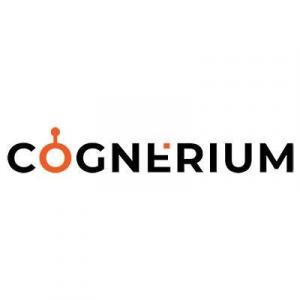Cognerium Study Outlines the User Subscription Model’s Value to Banks
In a case study conducted by Cognerium, it’s been determined that the User Subscription Model can help banks better understand their mobile app users’ behavior.
BOCA RATON, FLORIDA, UNITED STATES, January 20, 2021 /EINPresswire.com/ -- A case study led by Chief Data Scientist at Cognerium, Rohit Garg, examined how the User Subscription Model could predict whether a user will apply for a loan using a bank's mobile app. The client is a U.S. bank's marketing team interested in determining if this model could provide value to their organization as they work to convert users into customers.Since most banks have a mobile presence through Android and iOS apps, they want to identify users who will apply for a digital loan using their app. This way, the bank can save money by targeting only those mobile app users who are less likely to convert.
The data scientists at Cognerium developed the User Subscription Model to offer clients a solution for targeted marketing strategies. The model consists of various algorithms to increase accuracy, including Logistic Regression, K-Nearest Neighbors (K-NN), and Artificial Neural Network.
In initiating this approach, the data scientists first identified specific variables: screen ID where the user spent most of the time, number of screens visited by the user, number of loan screens visited by the user, number of credit card screens visited by the user, login day of the week, login hour, login location, user age, date of birth verification (Boolean), phone verification (Boolean), country verification (Boolean), and bank verification (Boolean).
In addition to identifying important variables, the data scientists ran the appropriate algorithm and got the best hyper-parameters to fit the model. Based on an evaluation of accuracy, Artificial Neural Network is selected. However, all three algorithms pose advantages and limitations. Machine learning algorithms in which the target variable can take a discrete set of values are referred to as classification algorithms.
Logistic Regression
• The Logistic Regression Model is a generalized form of the Linear Regression Model. The dependent variable can take only two values—0 or 1.
• Advantages to this algorithm are that it performs well when the dataset is linearly separable, it is less prone to over-fitting, and it is easier to implement and interpret.
• One limitation to this approach is the assumptions of linearity between the dependent variable and independent variables. Another shortcoming is that if the number of observations is lesser than the number of features, this model should not be used.
K-Nearest Neighbors (K-NN)
• K-NN is a distance-based supervised machine learning algorithm. To classify the new data point, the algorithm reads through the entire dataset to find out K-nearest neighbors. This algorithm is a robust classifier that is often used as a benchmark for more complex classifiers such as Artificial Neural Network.
• An advantage of K-NN modeling is that it does not include a training period, as the data itself is a model which will be the reference for future prediction. Also, because of this it is very time efficient in terms of improvising for a random modeling on the available data.
• K-NN modeling has several disadvantages, one being that it does not work well with large datasets and with high dimensionality, as this will complicate the distance calculating process. Additionally, the algorithm is sensitive to noisy and missing data.
Artificial Neural Network
• Neural networks are inspired by the human brain. The individual neurons can be mathematically approximated by logistic regression, and therefore an Artificial Neural Network (ANN) can be thought of as multiple layers of connected logistic regression classifiers.
• The first advantage of this algorithm is that it can train machines. It can also learn events and make decisions by commenting on similar events.
• A shortcoming of this approach is its unexplained behavior. Plus, when an ANN produces a probing solution, it does not explain why or how, reducing trust in the network.
In concluding the User Subscription Model's overall impact, it is clear that the solution helped the client enhance user management. With the improvement in accuracy, the bank is successfully able to target the right set of users. Overall, the subscription rate post-deployment of the User Subscription Model increased by 15%.
To learn more about Cognerium and the User Subscription Model, please visit https://www.cognerium.com/.
About Cognerium
Cognerium is a Florida-based financial technology company specializing in AI-enabled Digital Transformations for banks and credit unions. With a vision to build intelligence that can assist humans in solving complex problems, Cognerium built the world’s first AI operating system for banking, financial services, and insurance (BFSI). The company’s services encompass business growth, credit risk and compliance, data strategy governance, and digital experience.
Rohit Garg
Cognerium
contact@cognerium.com
Visit us on social media:
Facebook
Twitter
LinkedIn
Legal Disclaimer:
EIN Presswire provides this news content "as is" without warranty of any kind. We do not accept any responsibility or liability for the accuracy, content, images, videos, licenses, completeness, legality, or reliability of the information contained in this article. If you have any complaints or copyright issues related to this article, kindly contact the author above.

